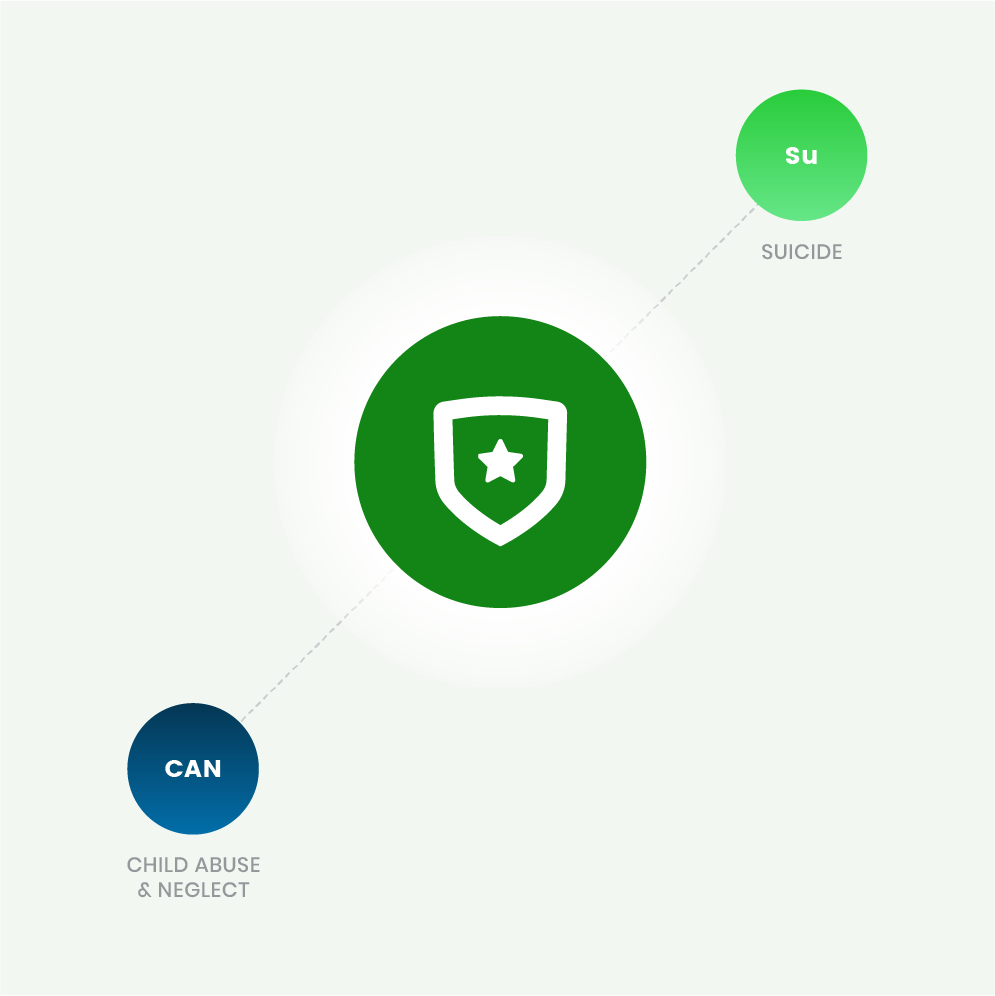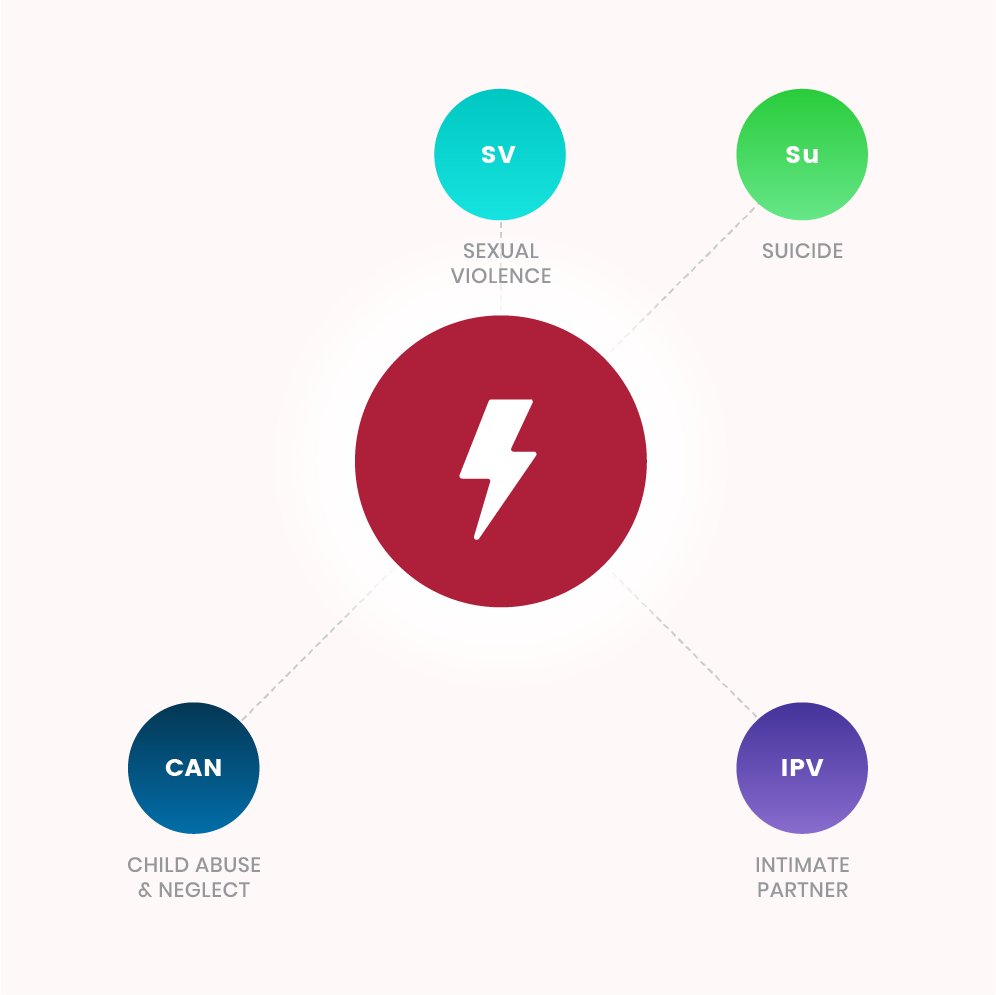Welcome to the Connections Selector!
This tool makes it easy to connect the dots between multiple types of violence and the risk and protective factors they share at each level of the social-ecological model (SEM).
Understanding these connections can help you prevent multiple forms of violence at once and increase your public health impact.
How to Use This Tool
To see risk and protective factors associated with one type of violence:
- Click on the dot of any violence type
- Then scroll down to the SEM to view its associated Risk Factors
 and Protective Factors
and Protective Factors  at the society, community, relationship, and individual levels
at the society, community, relationship, and individual levels - Deselect a violence type by clicking its dot again
- Clear all selections by clicking reset
To see risk and protective factors that are shared across multiple types of violence:
- Click on multiple dots to select more than one violence type
- Then scroll down to the SEM to view the shared Risk Factors
 and Protective Factors
and Protective Factors  at the society, community, relationship, and individual levels
at the society, community, relationship, and individual levels - Deselect a violence type by clicking its dot again
- Clear all selections by clicking reset
Understanding Risk and Protective Factors at All Levels
Different types of violence often share risk and protective factors.
Risk Factors ![]() make it more likely that people will experience or perpetrate violence.
make it more likely that people will experience or perpetrate violence.
Protective Factors ![]() protect people from violence and decrease the likelihood of it occurring.
protect people from violence and decrease the likelihood of it occurring.
The SEM shows the interaction between these factors at individual, relationship, community, and societal levels. It allows us to see what puts people at risk and what protects them from experiencing or engaging in violence.
Working together, it’s necessary to increase shared protective factors and decrease shared risk factors at every level of the SEM to prevent violence in all its forms.
Individual

Risk Factor
Low educational achievement

Risk Factor
Lack of non-violent social problem-solving skills

Risk Factor
Poor behavioral control/ Impulsiveness

Risk Factor
History of violent victimization

Risk Factor
Witnessing violence

Risk Factor
Psychological/ mental health problems

Risk Factor
Substance use

Protective Factor
Skills in solving problems non-violently
Relationship

Risk Factor
Social isolation/ Lack of social support

Risk Factor
Poor parent-child relationships

Risk Factor
Family conflict

Risk Factor
Associating with delinquent peers

Risk Factor
Economic stress

Risk Factor
Gang involvement

Protective Factor
Family support/ connectedness

Protective Factor
Connection to a caring adult

Protective Factor
Association with prosocial peers

Protective Factor
Connection/ commitment to school
At the Relationship Level, there are no risk or protective factors shared between {{relText}}
Community

Risk Factor
Neighborhood poverty

Risk Factor
High alcohol outlet density

Risk Factor
Community violence

Risk Factor
Diminished economic opportunities/high unemployment rates

Risk Factor
Poor neighborhood support and cohesion

Protective Factor
Coordination of resources and services among community agencies

Protective Factor
Access to mental health and substance abuse services

Protective Factor
Community support/ connectedness
At the Community Level, there are no risk or protective factors shared between {{comText}}
Society

Risk Factor
Cultural norms that support aggression toward others

Risk Factor
Media Violence

Risk Factor
Societal income inequity

Risk Factor
Weak health, educational, economic, and social policies/laws

Risk Factor
Harmful norms around masculinity and femininity







